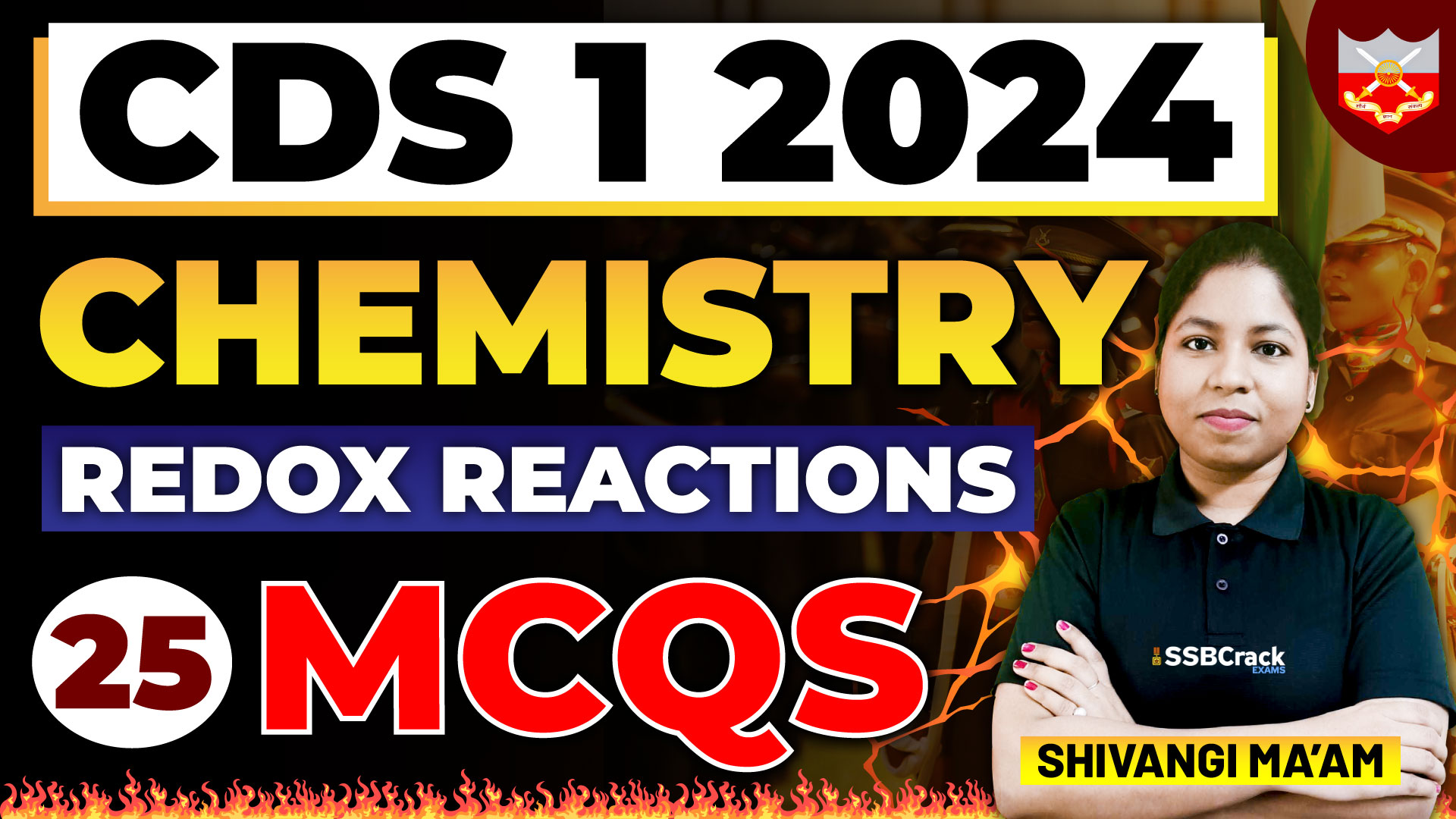Competitive exams like the Combined Defense Services (CDS) are known for testing candidates’ understanding of core concepts across various subjects. In the realm of chemistry, redox reactions hold significant importance due to their ubiquity in nature and industrial applications. The CDS 1 2024 exam, in particular, featured a set of 25 multiple-choice questions (MCQs) on redox reactions, emphasizing the crucial role of this topic in the exam syllabus. In this article, we’ll dissect these top 25 MCQs, unraveling their intricacies and providing insights to aid in mastering redox reactions.
- Understanding Oxidation-Reduction Reactions: The foundation of redox reactions lies in the transfer of electrons between reactants. These reactions involve two essential processes: oxidation, where a species loses electrons, and reduction, where a species gains electrons. MCQs often test candidates’ ability to identify oxidizing and reducing agents, as well as discerning changes in oxidation states.
- Balancing Redox Equations: Balancing redox equations is a fundamental skill tested in competitive exams. Candidates must be adept at applying oxidation number rules and the concept of half-reactions to balance equations. MCQs may present equations in acidic, basic, or neutral solutions, demanding familiarity with appropriate balancing techniques.
- Electrochemical Cells and Galvanic Cells: Redox reactions form the basis of electrochemical cells, including galvanic cells. Candidates should grasp concepts such as electrode potentials, cell notation, and the functioning of galvanic cells. MCQs may assess understanding through scenarios involving cell diagrams or determining cell potentials.
- Nernst Equation and Cell Potential: A deeper understanding of electrochemistry entails familiarity with the Nernst equation, which relates the cell potential to concentration gradients. MCQs might involve calculating cell potentials under non-standard conditions, necessitating application of the Nernst equation and comprehension of its components.
- Corrosion and Corrosion Prevention: Redox reactions play a pivotal role in corrosion processes, making this an important aspect of the syllabus. Candidates should be acquainted with types of corrosion, mechanisms involved, and preventive measures. MCQs may evaluate knowledge through scenarios requiring identification of corrosion types or selecting effective prevention methods.
Conclusion: Mastering redox reactions is imperative for excelling in competitive exams like the CDS. By dissecting the top 25 MCQs from the CDS 1 2024 exam, candidates can gain deeper insights into the nuances of redox chemistry. Developing a comprehensive understanding of oxidation-reduction reactions, electrochemical processes, corrosion mechanisms, and organic redox reactions is essential for success. Continuous practice, coupled with a thorough grasp of underlying concepts, will empower candidates to confidently tackle redox-related questions and excel in their endeavors.
Redox Reactions MCQs
- In Which Compound, The Oxidation Number of Oxygen Is Positive?
A. H2O2
B. Na2O2
C. OF2
D. More than one of the above
ANSWER: C - Which Of the Following Reactions Is Not Redox?
A. 2KCIO3 → 2KCI + 3O2
B. 2KBr + CI2 → 2 KCI + Br2
C. BaCI2 + Na2SO4→ BaSO4 + 2NaCl
D. More than one of the above
ANSWER: C - Which Among the Following Happens in An Oxidation Reaction?
Electrons are gained
Electrons are lost
Protons are gained
Protons are lost
A. D
B. A
C. B
D. More than one of the above
ANSWER: C - In Acidic Medium, One Mole Of Mno4−, Accepts How Many Moles Of Electrons
In A Redox Process?
A. 1
B. 3
C. 4
D. 5
ANSWER: D - Which One of The Following Statements Is NOT Correct for The Given
Reaction?
Fe(S) + CuSO4(aq) → FeSO4(aq) + Cu(s)
A. Iron is the reducing agent
B. The solution turns green in color after the reaction
C. Copper is a more reactive metal than iron
D. The reaction is an example of a redox reaction
ANSWER: C
For More MCQs On This Topic Refer To the video & Attached PDF


















